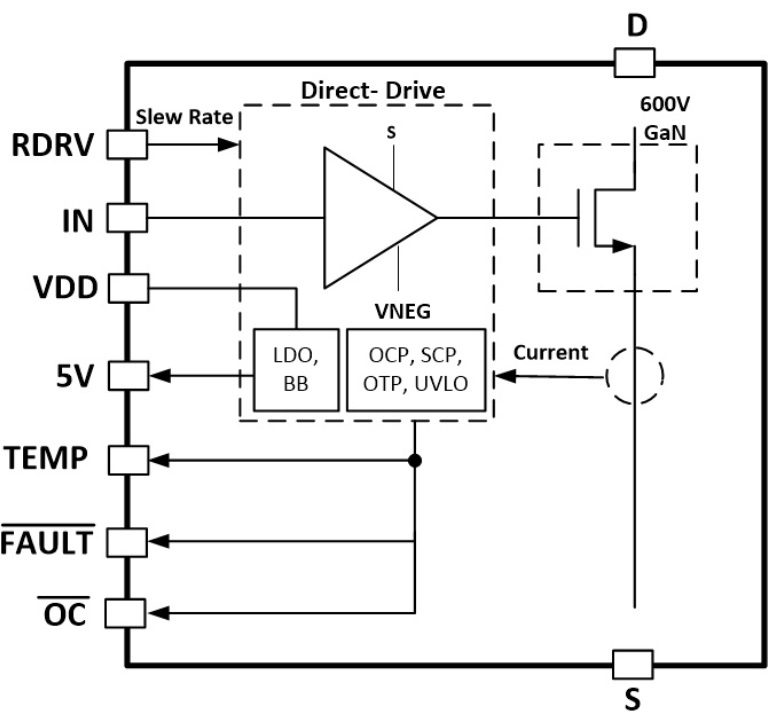
The advantages of GaN technology for battery testing systems are vast.
Almost everyone has been impacted by supply chain shortages that did not exist a few years ago. A significant reason for this reality is the forced adaptation of designers, manufacturers, and distributors to a new electronic supply chain. Designers are looking for newer semiconductors due to supply shortages. They need ways to reduce the bottlenecks in li-ion battery production.
The unavailability of common parts like capacitors and resistors, and specialized ICs for automotive systems, has not stopped the growth in demand for electrification products. This demand includes high-power battery packs used in industrial applications and electric vehicles (EVs).
However, the need for increased production of high-performance Li-ion batteries does shine a light on the supply chain bottleneck due to insufficient testing capability. Integrated GaN from Texas Instruments improves upon the inherent advantages of GaN technology to address the testing challenges that limit Li-ion battery development.
The Challenges to the Li-ion Battery Testing Supply Chain
Li-ion batteries are used to deliver power for a range of applications. These include off-grid implementations like portable wearables, cellular phones, computing devices, solar system backup power and storage units, grid-connected devices like electrical vehicle (EV) chargers, and grid-tie electronics like inverters. In addition, many battery manufacturers build multiple types of cells and battery packs, which can present testing challenges.
Battery manufacturers must verify operational characteristics, like charge/discharge rate, state of charge (SOC), and other parameters for various power levels since different battery types vary in size and capacity. However, conventional battery testing equipment is specialized or targeted to evaluate a certain type of battery.
Therefore, manufacturers must often invest in multiple testing solutions, which adds to the overall production costs.
One way to lower costs for battery manufacturers is to design an integrated testing solution that could accommodate different battery types. This is more complex than it seems. For low-power devices, power supplies, and testers, precision power transfer is emphasized. On the other hand, actual power capacity is more critical for high-power applications. Unfortunately, achieving both of these requirements has proven to be elusive.
The Advantages of a GaN-based Battery Test System
The most commonly used semiconductor material is silicon (Si), which is true for the power ICs that comprise power supplies and battery testers. An exploration into using gallium-nitride or GaN technology for power applications began near the end of the 20th century. It resulted in design flexibility to address the battery testing supply chain issue and provide cost and power density advantages for manufacturers who maintain several testing solutions.
GaN technology offers several advantages over Si for battery testing applications, as listed below.
- Increase in channel density
GaN allows for operation at higher frequencies and smaller form factors, allowing space to include more parallel channels than Si-based testing systems.
- Improvement in efficiency
Compared to SiC alternatives, GaN designs can achieve a size reduction of around 50% in the power supply AC/DC conversion stage. This coupled with ≅ 30% channel density increase, makes implementing GaN technology much more efficient.
- Decrease in overall costs
A higher switching frequency of approximately 62% and an approximate reduction of 60% in size compared to SiC alternatives translates into more throughput for manufacturers. Greater productivity and efficiency mean lower overall costs.
As discussed below, these GaN technology benefits can be enhanced further by an innovative design of the GaN FET itself.
Optimizing GaN Technology for Power Applications

TI’s LMG3422R030 GaN FET with integrated driver, protection, and temperature reporting
The figure above of the LMG3422R030 illustrates how TI leverages the benefits of GaN technology to address the precision issue for low-power applications and the capacity concern for high-power applications with an innovative design of the GaN FET. As shown, TI’s device integrates the driver and protection circuitry into a single package which minimizes components, reduces power loss, lowers cost, and improves reliability, which is critical for battery testing equipment.
Suppose you’re looking for CAD models for common components or information on implementing evolving innovations like GaN technology to improve your power electronics designs. In that case, Ultra Librarian helps by compiling all your sourcing and CAD information in one place.
Working with Ultra Librarian sets up your team for success to ensure streamlined and error-free design, production, and sourcing. Register today for free.








